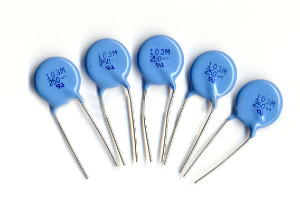-
Location:
- Home
- > news center > industry knowledge

(1) Parallel capacitor: formerly called phase-shifting capacitor. It is mainly used to compensate the reactive power of the inductive load of the power system to increase the power factor, improve the voltage quality, and reduce the line loss. The single-phase shunt capacitor is mainly composed of several parts such as the core, the shell and the outlet structure. Use metal foil (as a polar plate) and insulating paper or plastic film to be stacked and wound together. Several components, insulating parts and fasteners are pressed to form a condenser core, and are impregnated with insulating oil. The lead wires of the capacitor plates are connected in series and parallel to the outlet connecting piece at the lower end of the outlet porcelain bushing. The metal casing of the capacitor is filled with insulating medium oil.
(2) Series capacitors: connected in series in power frequency high voltage transmission and distribution lines to compensate for the distributed inductance of the line, improve the static and dynamic stability of the system, improve the voltage quality of the line, lengthen the transmission distance and increase the transmission distance Transport capacity. Its basic structure is similar to that of a parallel capacitor.
(3) Coupling capacitors: mainly used for high-frequency communication, measurement, control, protection of high-voltage power lines, and as components in devices that extract electrical energy. The high-voltage end of the coupling capacitor is connected to the transmission line, and the low-voltage end is grounded through the coupling coil, so that the high-frequency carrier device is coupled with the high-voltage line at low voltage. The coupling capacitor shell is composed of a bottom and a cover made of a porcelain sleeve and steel plate. An expander made of thin steel plate is installed in the shell to compensate the change of the volume of the impregnant with temperature.
(4) Circuit breaker capacitor: formerly known as voltage equalizing capacitor. It is mainly used for parallel connection on the fracture of the ultra-high voltage circuit breaker for voltage equalization, so that the voltage between the fractures is uniform during and during the breaking process, and can improve the arc extinguishing characteristics of the circuit breaker and increase the breaking capacity. The structure of the commonly used circuit breaker capacitor is similar to the coupling capacitor. With the development of high-voltage ceramic capacitors, ceramic capacitors have been used as capacitive components, and then put into a ceramic sleeve and a steel plate shell to make a circuit breaker capacitor.
(5) Electric heating capacitors: used in electric heating equipment systems with a frequency of 40Hz-24000Hz to increase the power factor and improve the circuit voltage or frequency characteristics. Because of the large heat generation of electric heating capacitors, good heat dissipation must be ensured. Usually the plates are cooled by water. Suitable for electric heating capacitors above 4000Hz, whose shell is welded with brass plates.
(6) Impulse capacitor: It mainly serves as energy storage. It is charged by a low-power power source for a long time, and then oscillates or discharges without oscillating within a short period of time to obtain a large impact power. Pulse capacitors have a wide range of uses, such as basic (energy storage) components such as impulse voltage generators, impulse current generators, and oscillation circuits for circuit breaker tests.
(7) DC and filter capacitors: used in high-voltage DC devices and high-voltage rectifier filter devices. The AC filter capacitor can be used to filter out the high-order harmonic components in the power frequency current.
(8) Standard capacitor: used in the power frequency high voltage measurement dielectric loss loop, as a standard capacitor or as a capacitive voltage divider device for measuring high voltage. Standard capacitors require accurate and stable capacitance values, so gas and double-shielded coaxial cylindrical and concentric spherical plate systems are often used.